Urgent Care
Diagnosis, treatment, and services for your everyday medical needs such as flu shots and lab work.
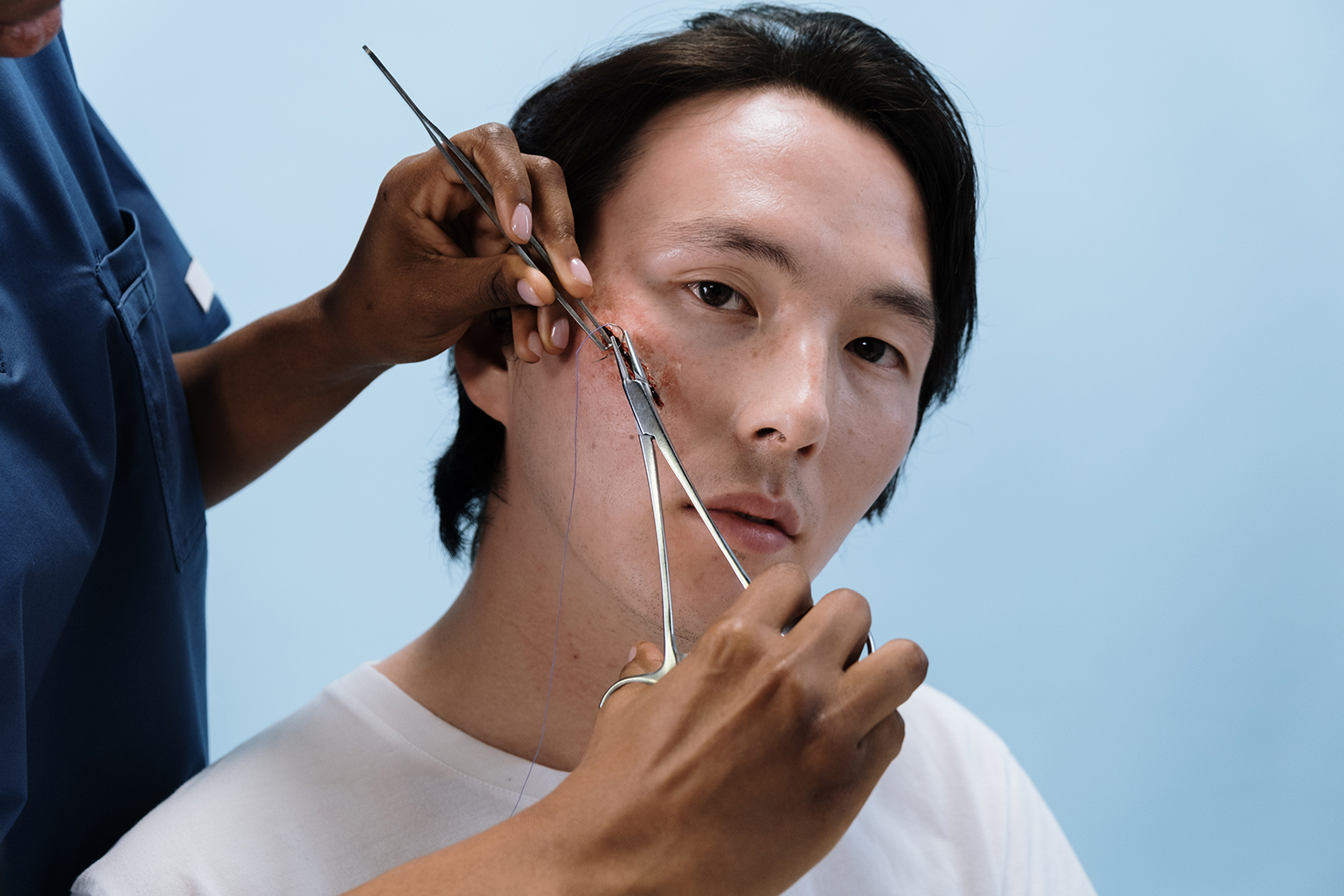
Major or small, we can all think back to a time when we cut, scraped, or grazed ourselves. Sometimes all we needed was a band-aid, other times stitches. Either way, these unexpected accidents happen, especially for kids. Children love to play and sometimes when they’re monkeying around on the jungle gym or the playground, they fall and find themselves with a laceration. As a parent, it can be terrifying to find your son or daughter suffering from an open wound which is why understanding the difference between a deep wound and a shallow one is so important.
A laceration is a tear or opening in the skin caused by an injury. Lacerations may be small and need only minor treatment or may be large enough to require emergency medical care. Wounds such as cuts, scrapes, and lacerations are a split of the skin caused by an impact of some sort. It is common for children to sustain these types of injuries through play, sports, accidents, or ordinary day-to-day activities. Lacerations and other abrasions can happen in almost any area of the body. Depending on the area affected and the severity of the cut, there may be a lot of bleeding or very little.
Minor wounds do not usually require medical attention and can be managed with standard first-aid procedures at home. You should apply pressure to your child’s wound with a clean paper towel or cloth and after removing pressure, the bleeding should slow down or stop altogether. If bleeding continues, reapply pressure and take your child to their healthcare provider for further evaluation.
If bleeding has stopped or slowed, rinse the wound and surrounding area with water. If you can see any dirt or debris in the wound, use a pair of sanitized tweezers to remove any particles. Very small amounts of dirt are OK in grazes but if there are large amounts that you can’t remove, take them to a medical professional who can do it for you.
Lastly, cover the wound with a bandage. This will help to keep the wound clean and will protect the area as it heals. Keeping the wound covered also keeps the wound moist, which helps the healing process.
Like minor wounds, try to stop the bleeding by applying pressure to the injured area. If this doesn’t work and there is a large amount of bleeding that does not quickly stop, or the wound is very deep or is a deep puncture wound, or the wound is gaping apart, despite controlling the bleeding it may need closing with glue or stitches which will require a visit to their healthcare provider.
Stitches are special types of thread that hold wound edges together while they heal. Stitches help to stop bleeding, reduce scarring and decrease the chance of infection in the wound.
Steri-Strips are special adhesive bandages that can sometimes be used on shallow wounds instead of stitches. Steri-Strips perform the same functions as stitches.
Lacerations that involve the face, are longer than 1/2 inch, are deep, or are bleeding heavily, may require stitches.
If your child’s healthcare provider needs to place stitches or use Steri-Strips to close a laceration, you will be given specific instructions on how to care for the stitches. Treatment at home will be based on the place and size of the laceration, the type of stitches used, and any special needs noted by your child’s physician. Sometimes antibiotics are given to help prevent infection in the wound.
Some stitches dissolve and do not need to be removed while other stitches require removal. Your child’s provider will let you know when to return to have stitches removed. It’s important to know that you should not attempt to remove your child’s stitches at home.
For minor wounds, change the bandage whenever it becomes wet or dirty and replace it with a fresh one. Watch for signs of infection as the wound heals and if it seems to not be healing properly, take them to their healthcare provider for evaluation.
Typically, lacerations are no big deal but if your child’s wound doesn’t stop bleeding and the cut looks deep, your best bet is to have them looked at by a medical professional. Wounds can be scary, and no parent wants to witness their son or daughter bleeding, but rest assured, the experts at Chai Care will take great care of your child and will have them as good as new in no time!
* Legal disclaimer: The content of this article and the entire Chai Care blog is for educational purposes only; it does NOT constitute medical advice and must not be considered as such. Please consult a medical professional regarding any symptoms or health concerns you or your loved ones.
Feb 13, 2023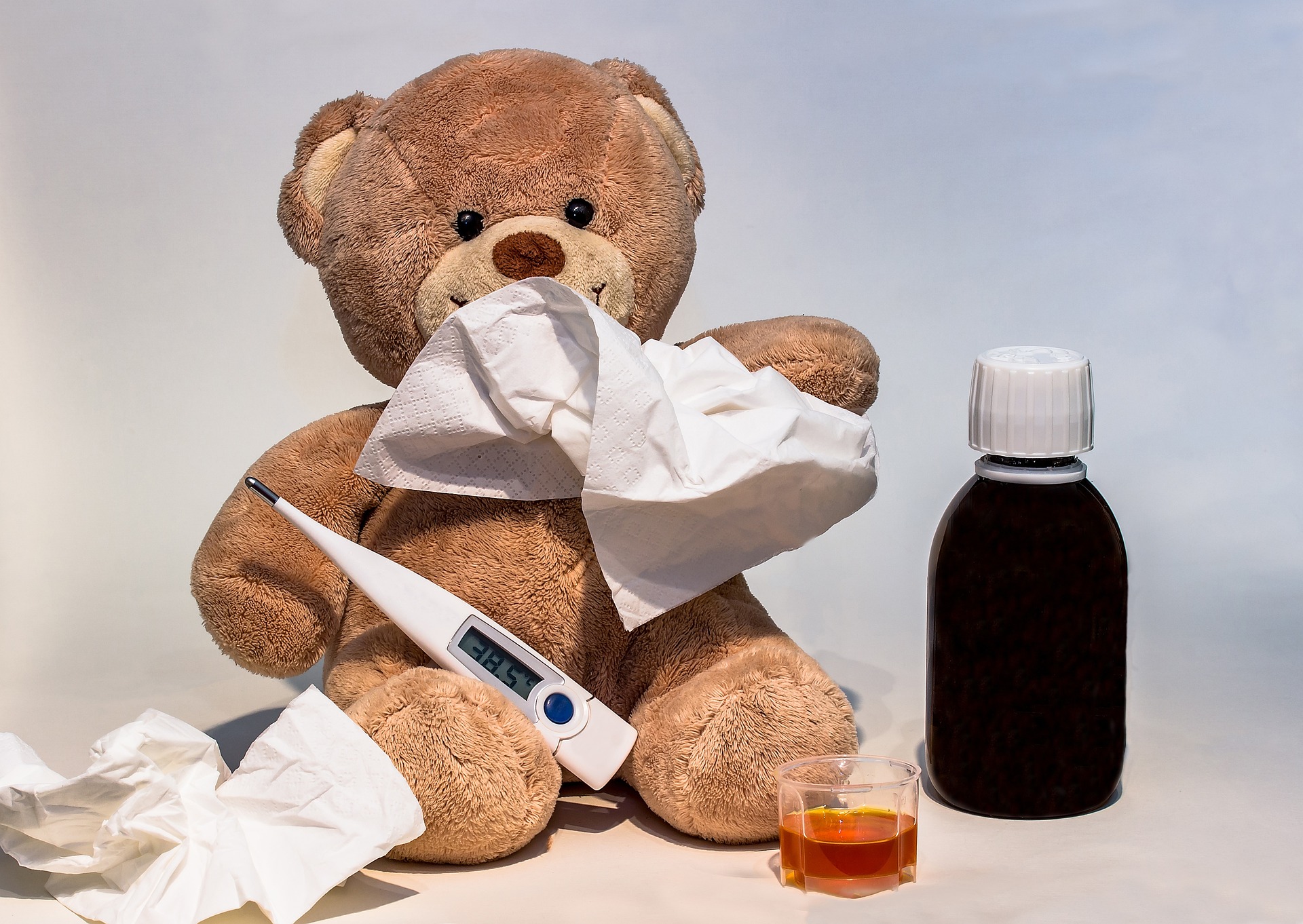
All kids get a fever at some point or another. This may sound like a bad thing, but it’s good because it can help your child’s immune system fight the infection they are struggling with. Still, it’s important to make sure your son or daughter receives the proper treatment and care necessary to make a full recovery. Whether you’re an adult or a child, fevers are brutal to deal with, but fortunately, there are plenty of ways to avoid, treat, and prevent them!
We all have been with a person who is sick and asks to feel their head, checking to see if they feel warm. This is a common method to see if someone is “burning” up and has a fever. However, for it to actually be a fever, the body’s temperature must be 100.4°F (38°C) or higher. The various and most accurate ways of measuring a temperature are rectal, armpit, ear, forehead, and mouth. Adults sometimes get a slightly different number, so the number that means a child has a fever is a little different too.
Other signs that your child might be suffering from a fever would be having chills, cold sweats, flushed skin, above-average temperature, or acting differently. Due to the discomfort, they are feeling your child may become fussy or cranky.
Typically, fevers in kids are caused by an infection. The cool thing is that a fever will help the body by stimulating the immune system to fight the infection. Healthcare experts also believe the higher the temperature, the harder it will be for germs to grow. A couple of other reasons kids may suffer from fevers would be due to immunizations, a child who is teething, and believe it or not, overdressing. Infants, more specifically newborns, may get fevers if they’re overdressed, wrapped in a blanket, or a hot environment because they don’t regulate their body temperature as well as older kids.
Treating a fever with medicine isn’t needed if a child is still playing, drinking, and doesn’t have pain. You should supply your child with medicine only when a fever causes them discomfort or prevents them from drinking fluids. It’s worth mentioning that when your child does have a fever, keep an eye on them, help them to rest, and keep offering fluids. This is so they can make up for the fluids they lose from sweating. Oral rehydration solutions like Pedialyte, are a good choice. You also can give water, soup, ice pops, and flavored gelatin. Avoid drinks with caffeine, including colas and tea, which can make dehydration worse by making kids pee more often. Let kids eat what they want (in reasonable amounts), but don’t force it if they don’t feel like eating much!
Making sure your child stays hydrated isn’t the only thing you can do. Having them wear lightweight clothing and stay covered with a light sheet or blanket can also help. It’s important to remember to keep the room at a comfortable temperature and make sure they get plenty of rest. Staying in bed all day isn’t necessary, but a sick child should take it easy.
The temperature that should trigger a call to your child’s healthcare provider depends on their age, the illness, and whether they have other symptoms. In general, call their provider if your child is younger than 3 months old with a rectal temperature of 100.4°F (38°C) or higher, 3 months or older with a temperature higher than 102.2°F (39°C), or at any age but has a health problem like cancer or sickle cell disease and has a fever.
In most cases, your child will be back to their old self within a couple of days. For older babies and kids, the way they act is more important than the reading on your thermometer or what symptoms they’re exhibiting. Don’t be alarmed if your son or daughter is a bit cranky when they have a fever. This is completely normal and should be anticipated, but if you are ever in doubt about what to do, or if your child is acting ill in a way that concerns you, the experts at Chai Care will happily take a look!
* Legal disclaimer: The content of this article and the entire Chai Care blog is for educational purposes only; it does NOT constitute medical advice and must not be considered as such. Please consult a medical professional regarding any symptoms or health concerns you or your loved ones.
Jan 31, 2023
Understanding the symptoms of your child’s illness or injury is extremely important but knowing the different forms of medication and remedies they need to heal their wounds is crucial to their overall health. Most parents know the typical over-the-counter drugs to use for at-home care, however, new drugs come out every year, making it that much more important to stay informed on how to best treat your child in today’s world—in this case nebulizer treatment.
A nebulizer is a device that sprays a fine, liquid mist of medicine. It is often used in younger children who can’t use inhalers. The device has an air compressor, a cup for medicine, and tubing connected to a mouthpiece or mask. Your child breathes in the medicine through the mouthpiece or mask. Each treatment takes about 15 to 20 minutes to complete. There are several different types of nebulizers used for asthma medicine: jet nebulizers, ultrasonic nebulizers, and mesh nebulizers. It’s important to know that the instructions can be slightly different for each. So, make sure you know how to use your child’s nebulizer.
Nebulizer treatment can be tricky at times which makes the following steps important to know when giving treatment to your child. Still, you should speak to your child’s healthcare provider for specific instructions, but usage will vary depending on the child’s symptoms.
First things first, wash your hands and gather the recommended supplies which are medicine to be nebulized and additional nebulizing solution such as sterile saline. Then, grab your nebulizer set. This is the nebulizer cup, mouthpiece or mask, and tubing to connect to the nebulizer machine. Find a quiet activity for your child to do while he or she sits up for the treatment such as reading a book, drawing, or playing a quiet game.
After this, place the nebulizer on a flat surface, the best place would be on a table or the floor. Then, plug the unit into a wall outlet and connect the tubing to the nebulizer machine, and finally put the medicine into the nebulizer cup and screw the cap on securely. Some medicine may be premixed. Other medicine may need to be measured. Connect the other end of the air tubing to the nebulizer cup, connect the mouthpiece or face mask to the nebulizer cup, and now turn the machine on. It’s important to check to make sure a fine mist of medicine is coming through the face mask or mouthpiece. Most nebulizer cups need to be held upright to work correctly.
Place the mouthpiece in your child’s mouth with their lips sealed around the mouthpiece and make sure to encourage your child to take slow deep breaths in and out of their mouth. The mist should disappear with each breath.
Place the mask over your child’s mouth and nose. The adjustable elastic band may be used to hold the mask in place and make sure your child takes deep breaths in and out for the entire treatment. Instruct your child to continue slow, deep breaths until all the medicine in the nebulizer cup is gone. You may need to tap the sides of the nebulizer cup to make sure all medicine is given. Once you have done this, turn the nebulizer machine off and check your child’s peak flow and make sure to measure it before and after the treatment.
It’s important to stay with your child during their nebulizer treatment and if your child vomits or has a severe coughing spell, stop the treatment. Make sure your child rests for a few minutes, then resume the treatment. Check the filter on the nebulizer machine once a week to ensure it is clean and sanitary. When it becomes discolored, replace it with a new filter. Always keep spare nebulizer supplies at home. Before you run out, call your medical supply company.
Sometimes babies and little kids have trouble getting asthma treatments with a nebulizer. Kids need to sit still for anywhere between 15 to 20 minutes while they breathe in the medicine. Every parent with a toddler knows just how hard that can be.
Using a nebulizer should become a daily routine. Use the nebulizer at the same time each day, so your child knows to expect it. Some parents give treatment time a fun name, to make it exciting. You can do things like read stories, watch movies or play with toys during nebulizer time to make your child feel more comfortable
If your child is afraid of the mask, you can turn it into a game, saying it’s a superhero mask and will give them special powers. Maybe throw on Spider-Man or an Avengers movie so they can really engage with your story. There are also masks you can buy that are shaped like animals and cool creatures!
If your child is old enough, have them help you put the mask on, hold the tubing, and turn the machine on and make sure to congratulate your child for a job well done!
Not every child will handle nebulizer treatment the same which is why listening to your son or daughter is so important. Some children can sit still for long periods of time while others fuss around and will become agitated. Treatment such as this one requires patience and concentration, making you that much more important to the healing process. The good news is if you do find yourselves struggling to use a nebulizer, the experts at Chai Care will happily guide you through all the steps and your child will be healthy in no time!
* Legal disclaimer: The content of this article and the entire Chai Care blog is for educational purposes only; it does NOT constitute medical advice and must not be considered as such. Please consult a medical professional regarding any symptoms or health concerns you or your loved ones.
Jan 10, 2023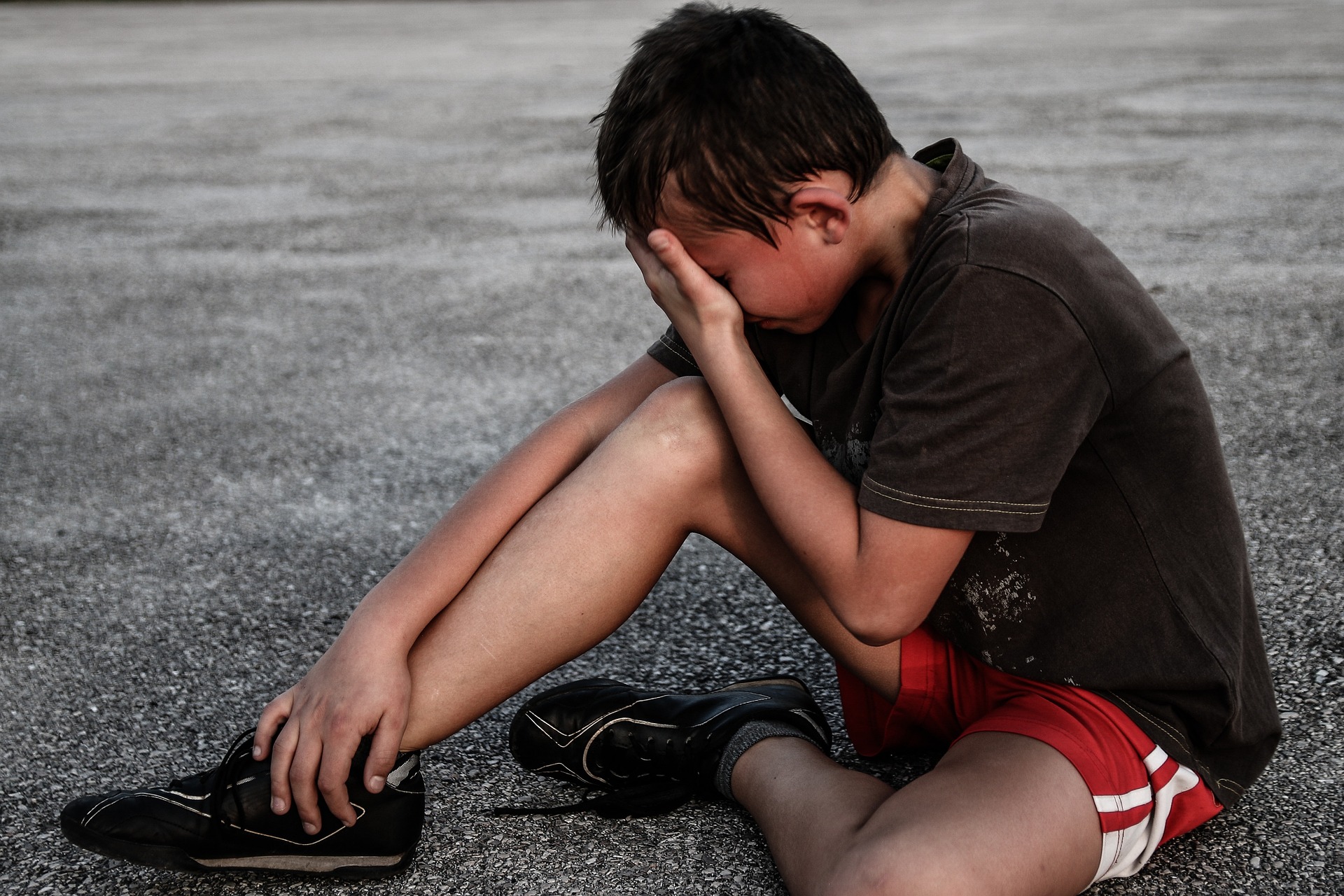
Children can be wild and intense when monkeying around with their friends or even by themselves. Whether it be on a playground, basketball court, or a park, kids love to play and explore their surroundings. Unfortunately, with this curiosity, inevitably an injury of some sort is bound to happen. The most common being some sort of sprain or strain. Most people believe these two things to be the same. Even though they sound alike, sprains and strains are completely different types of injury – and both are very common in children. Here, we will go over the differences between these two injuries and how your child can avoid them.
Sprains happen when a ligament suddenly stretches, twists, or tears. This injury can occur when a child falls or suffers a hit to the body. Sprains often affect the ankles, knees, or wrists.
Strains happen when a muscle or tendon is pulled or torn. This type of injury can happen suddenly, such as when a child overstretches a muscle, in a quick, jerking movement. Or it can happen over time if a child overuses a muscle or tendon. Overuse can occur during activities that require movements that are performed over and over.
Those who are most susceptible are teens that are active, but those who play sports are more at risk for a sprain or a strain. These injuries are not as common in younger children because their growth plates are weaker than the muscles or tendons and are more likely to be injured instead of the ligament.
Your child’s healthcare provider makes the diagnosis with a physical exam. During the exam, he or she will ask about your child’s health history and how the injury happened. They will also find where the pain is to help determine where the injury may be. If this is not enough, your child may need an X-ray, MRI, or CT scan.
In most cases, sprains and strains happen in some sort of sports injury or other intense physical activity. They are from either injury or overuse of muscles or joints. Many sports injuries can be prevented by ensuring your child warms up first, trains and conditions properly wears the right protective gear, and uses the right equipment.
You can also help your child prevent overuse injuries by making sure your child sets aside one to two days each week for rest from competitive sports and training and takes breaks from a specific sport during the year. This is extremely important and might be difficult because as we all know, children love playing around, but it is crucial to have them understand that by not resting they are putting themselves at risk for an injury. Also, encourage your child to focus on fun, skill-building, safety, and sportsmanship when playing sports which will lead to a proactive lifestyle and a healthy way of competing.
Overall, treatment will depend on your child’s symptoms, age, and general health. It will also depend on the severity of the condition. Initial treatment for a sprain or a strain includes rest, ice, compression, and elevation (RICE). Other routes to take would be pain medicines, such as ibuprofen, a splint, cast, a removable walking boot, crutches or wheelchair, physical therapy to stretch and strengthen the injured muscles, ligaments, and tendon, and lastly, surgery. Surgery may not be necessary and is not commonly needed, but occasionally is needed if there is a fracture
In most cases, sprains and strains are not something that should keep you up at night. The recovery time is rather quick and 9 out of 10 times, your child will be back to normal in no time. Still, as a parent, you worry and love your child and would never want to see them in anguish. With that being said, do your best to educate them on the dos and don’ts of safe play and if there does come a time when your little one injures themselves, the professionals at Chai Care will make sure they receive the treatment they need!
* Legal disclaimer: The content of this article and the entire Chai Care blog is for educational purposes only; it does NOT constitute medical advice and must not be considered as such. Please consult a medical professional regarding any symptoms or health concerns you or your loved ones.
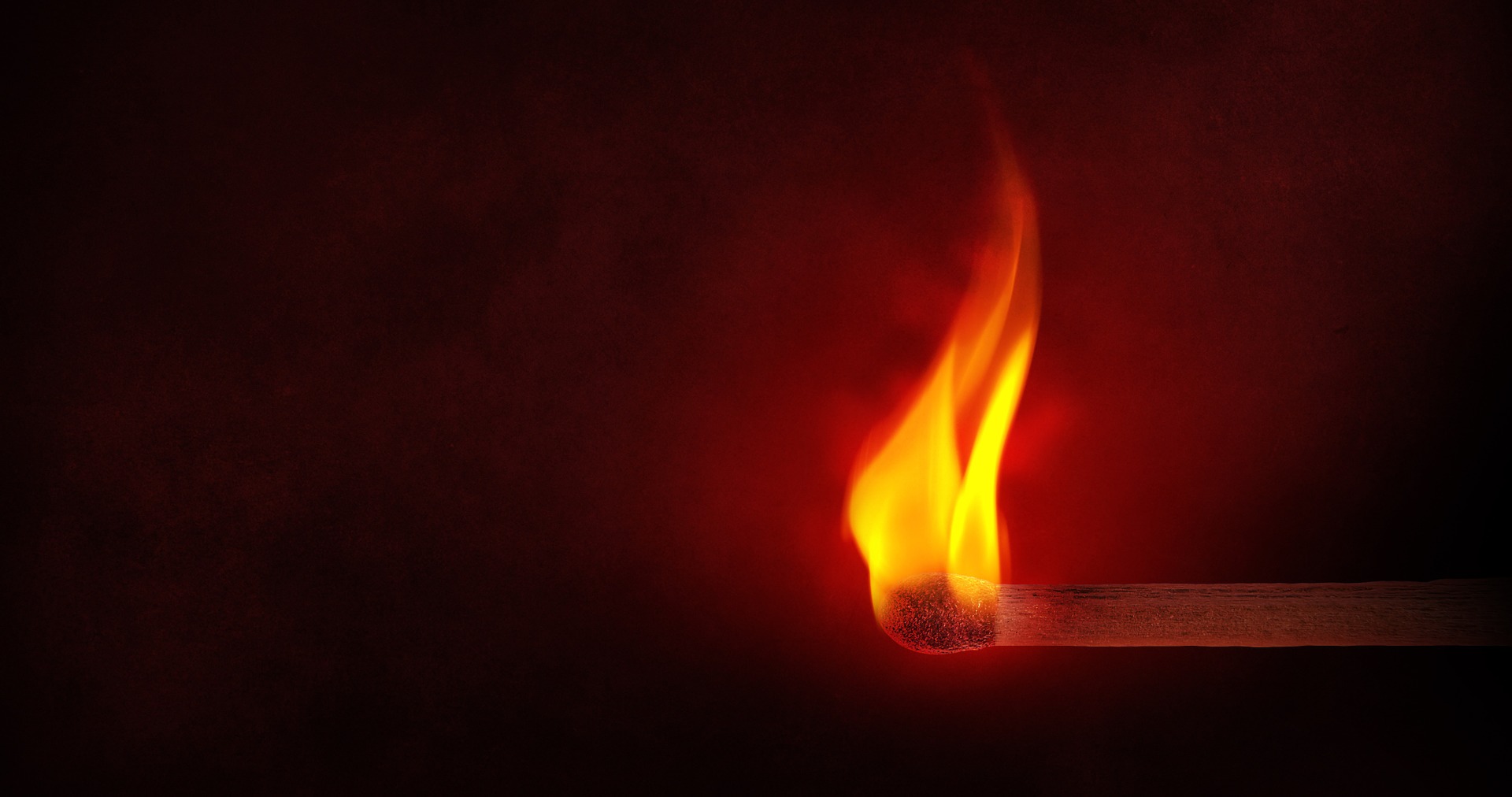
If you play with fire you are going to get burned. As adults, we know this already, most likely from a bad experience, but children have yet to figure this out. Burns are nothing to trifle with and can cause serious damage, which is why it is paramount to stay informed and to teach our youth the danger of playing with fire and the consequences that may ensue.
As you already know, burns are a type of injury caused by heat. Heat can be thermal, electrical, chemical, or electromagnetic energy. Most burn accidents occur at home. Interestingly enough, about 75% of all burn injuries in children are preventable. Scalding is the leading cause of burn injury for children, while smoking and open flames are the leading causes of burn injury for older adults.
We all know what a burn is, but many people don’t know what the most common burns are. First off, there are thermal burns. These burns raise the temperature of the skin and tissue underneath. Thermal burns happen from steam, hot bath water, tipped-over coffee cups, hot foods, cooking fluids, etc. Next, there are radiation burns which happen from exposure to the sun’s ultraviolet rays (a sunburn because the skin isn’t well-protected in the sun) or from radiation such as during an X-ray. Then, there are chemical burns that happen from strong acids (like drain cleaner or button batteries) or spilling chemicals (like bleach) onto the skin or eyes. Lastly, electrical burns. These are from contact with electrical current and can happen from things like biting on electrical cords or sticking fingers or objects in electrical outlets, etc. Knowing the type of burn a child has can help with first-aid measures. All burns should be treated quickly to lower the temperature of the burned area and reduce damage to the skin and tissue underneath.
Simply put, there are first, second, and third-degree burns—1st being the least significant and 3rd being the most serious.
…Also known as superficial burns, burns are the mildest type of burns. They’re limited to the top layer of skin. Signs and symptoms to look out for would be redness, pain, and minor swelling. The skin is dry without blisters. Healing time is about 3–6 days; the superficial skin layer over the burn may peel off in 1 or 2 days.
…Which are a bit more serious. These burns are more serious and involve the top layer of skin and part of the layer below it. The burned area is red and blistered and can swell and be painful. The blisters sometimes break open and the area is wet looking with a bright pink to cherry red color. Healing time varies depending on the severity of the burn. It can take up to 3 weeks or longer.
…Are the most serious type of burn. They involve all layers of the skin and the nerve endings there and may go into underlying tissue. The surface appears dry and can look waxy white, leathery, brown, or charred. There may be little or no pain or the area may feel numb at first because of nerve damage. Healing time depends on the severity of the burn. Most need to be treated with skin grafts, in which healthy skin is taken from another part of the body and surgically placed over the burn wound to help the area heal.
Most small, blistering burns can be treated and cared for at home, however taking your little one to your healthcare provider will always be your best bet. If you have any questions about whether a burn can, be taken care of at home, discuss it with your physician. If you do choose to take the home-care route, make sure to cool the burn by running cool running water over the burn for about five minutes. This helps stop the burning process and decreases pain and swelling. Do not put ice on a burn and don’t rub the burn, because this can worsen the injury. Do not break blisters as this can increase the risk of infection at the burn site. Make sure to cover the burned area with a clean bandage that will not stick to the burned site. This helps decrease the risk of infection and decreases pain. Lastly, protect the burn. It’s crucial to keep the burn site clean with gentle washing with soap and water. Do not apply any ointments to the burn site unless instructed by your pediatrician. Never apply butter, greases, or other home remedies to a burn before discussing it with your healthcare provider, as these can increase the risk of infection as well.
If you believe that your child is suffering from a third-degree burn and has blisters larger than 2 inches or full-thickness burns with white or charred skin, go to an emergency department. It is important that before coming in you should cover the burn with a sterile dressing or clean washcloth or towel.
Superficial or mild partial thickness burns hurt for about two days and peel like a sunburn in about a week. These burns shouldn’t leave a scar if managed correctly. If the burn is open, your child will need a tetanus booster if it has been more than five years since his/her last tetanus shot, your child has had less than three tetanus shots in his/her lifetime, or if you’re not sure when your child had a tetanus shot last. Your child should get this shot from your pediatrician within three days of the burn. Call your healthcare provider immediately if your child’s burn looks infected. Symptoms include a large red area or streak larger than 2 inches around the burn. A fever may or may not be present. If there is increased redness or notice any signs of infection, bring your child to Chai Care and our top-notch staff will gladly take care of your little one!
* Legal disclaimer: The content of this article and the entire Chai Care blog is for educational purposes only; it does NOT constitute medical advice and must not be considered as such. Please consult a medical professional regarding any symptoms or health concerns you or your loved ones.
Dec 15, 2022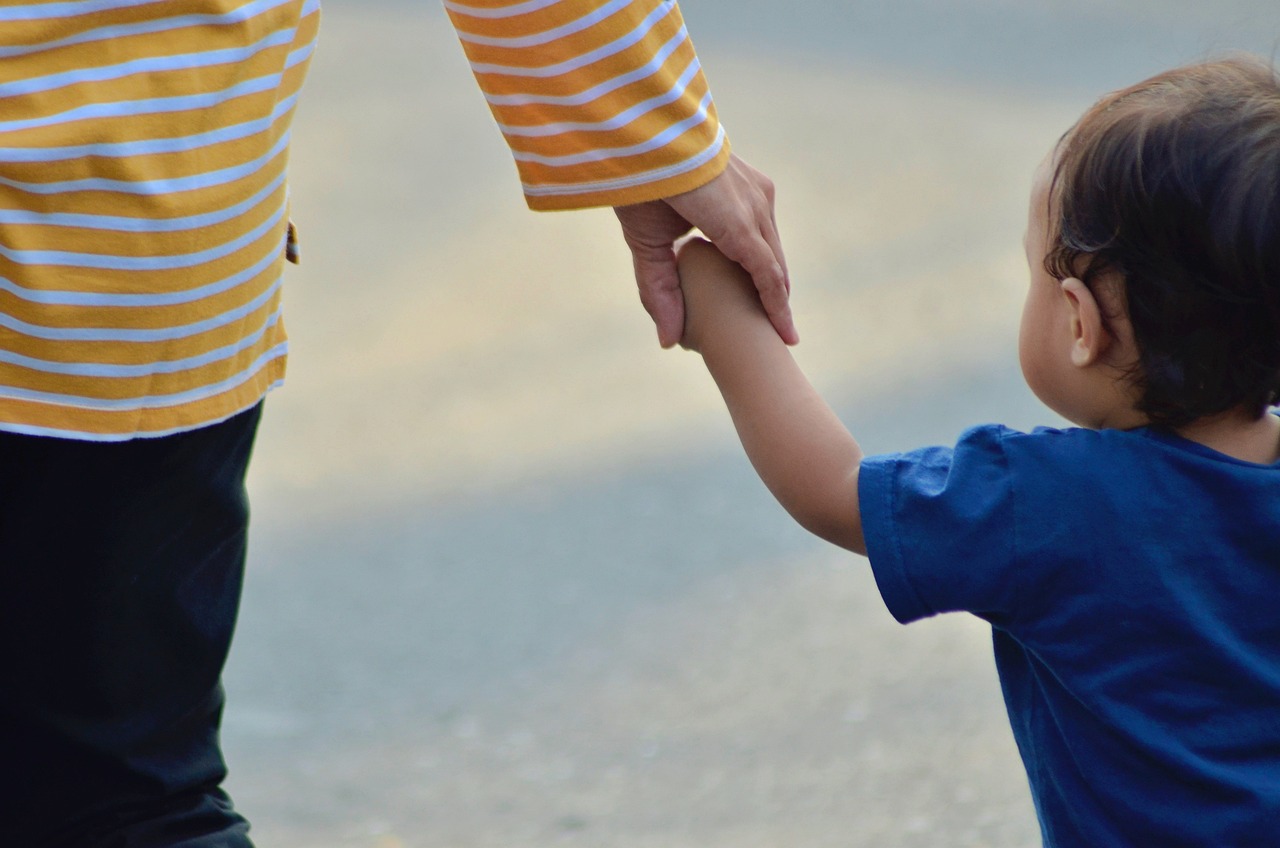
“History will judge us by the difference we make in the everyday lives of children.” – Nelson Mandela.
Our obligation as adults is to protect our youth by any means necessary. The best way to do that is by staying informed about new scientific studies and taking advice from medical professionals on how to best help and nurture the children of the world. Because of their lack of knowledge and experience, toddlers depend on us to guide them through all the dangers and illnesses that may come their way. Even the safest and most responsible adults make mistakes now and again, which is why we are going to dive into everything you need to know about—”nursemaid’s elbow”.
When most people hear the words “nursemaid’s elbow” they are surprised to learn that it has anything to do with young children due to its strange name. In simple terms, nursemaid’s elbow occurs when the radius (one of the bones in the forearm) slides out of place from where it is normally attached to the elbow joint. It is a common condition in children younger than four years of age. Other names include pulled elbow, slipped elbow, or toddler’s elbow. The medical term for Nursemaid’s Elbow is “radial head subluxation”.
Let’s say you are out on the town, taking a leisurely stroll with your toddler. The youngster notices something that catches their eye, and they begin to run towards the excitement, when the parent grabs their arm to stop them, pulls too hard, and suddenly contracts the hand or forearm. This causes the radius to slip out of the ligament holding it into the elbow. It can also occur when an infant rolls himself or herself over, from a fall, or from pulling or swinging a young child by the hand. We all love picking up a baby and playing with them, but it’s important not to be too overzealous because the child is not fully developed to withstand such quick movements.
Nursemaid’s elbow is a tricky injury because it usually occurs to toddlers and young children who may not be able to articulate what exactly the problem is, leaving it up to the parent or guardian to figure it out. At first glance, nursemaid’s elbow may not be obvious and can easily go unnoticed, but the child will usually cry from the discomfort. Other important signs to look for would be: if the child avoids moving their arm below the shoulder, supports one arm with the other hand, holds their arm straight or slightly bent and close to the body, or if they refuse to rotate their palm.
In other words: if the child lacks mobility and demonstrates discomfort and flexibility in the arm, there is a good chance they are experiencing nursemaid’s elbow.
Now that you know the symptoms, the next question is:
The simple answer is: Yes.
Normal use of the arm will be painful and inhibited until the injury is corrected, which is why it is crucial to seek medical attention as soon as possible. There are certain cases where nursemaid’s elbow has corrected itself, but there is no reason to take that gamble, especially when dealing with children. Let your healthcare provider be the one to examine your child to make sure there are no fractures or breaks and once the examiner does that, they can begin the process of correcting the injury.
After your child has been officially diagnosed by your healthcare provider, they will perform a physical exam and ask a series of questions about what happened at the time of the injury. This physical exam will test your child’s range of motion and see if there is any tenderness at the elbow. The treatment is a simple, but effective physical maneuver called “nursemaid elbow reduction”. Lasting only a few seconds, the healthcare provider will perform the reduction by gently flexing and rotating the arm. If you hear a “pop” sound, don’t be alarmed! This is simply the joint moving back into place. As far as imaging tests are concerned, they often won’t show evidence of nursemaid’s elbow, however, an X-ray can be used to rule out a fracture or break.
Even though you should seek medical attention to have the joint corrected by a professional, there are forms of treatment you can do on your own. There are plenty of over-the-counter drugs to help your child manage the pain and applying ice to the injured area will also help. There are some adults out there who have attempted the correction maneuver themselves, this is not well advised.
Recovery begins immediately after your child’s elbow has been reduced. The best part is your child will only feel pain for a few seconds, but soon after will feel as good as new!
Now that you know what nursemaid’s elbow is and what signs to look for, let’s discuss a few simple ways to prevent this from happening. The best thing to do is avoid pulling or jerking your child by the arm or hand. This may sound simple, but when a child attempts to cross a street before looking both ways or their curiosity gravitates them to something that can harm them, your parental instincts kick in, telling you to pull them out of the way. Even though you are trying to protect them, you may actually hurt them in the process. Another method would be to use verbal cues instead of physical ones to get their attention and lastly, try not to swing your child around by the hands or arms for fun. Many parents do this because it’s entertaining and puts a smile on their child’s face, but this is probably the most common way children suffer from nursemaid’s elbow.
If the healthcare provider has successfully corrected the joint, nursemaid’s elbow should not come back but it is worth noting that a child who has had this injury is more likely to have it again, than someone who hasn’t. This is because the injury stretches the ligaments, making it harder to hold the bone in place. A child who has experienced Nursemaid’s Elbow may have looser ligaments in general too. Fortunately, as children grow, their bones and ligaments will become stronger, making nursemaid’s elbow highly unlikely after a child turns five years old.
We are privileged to live in a country where we have countless urgent care facilities that are staffed with exceptional medical professionals who can easily help if your child experiences nursemaid’s elbow. This is an injury that should not go un-diagnosed and luckily for you, Chai Care will always be here to supply you with the top-notch service and sensitive care that your child deserves!
* Legal disclaimer: The content of this article and the entire Chai Care blog is for educational purposes only; it does NOT constitute medical advice and must not be considered as such. Please consult a medical professional regarding any symptoms or health concerns you or your loved ones.
Dec 12, 2022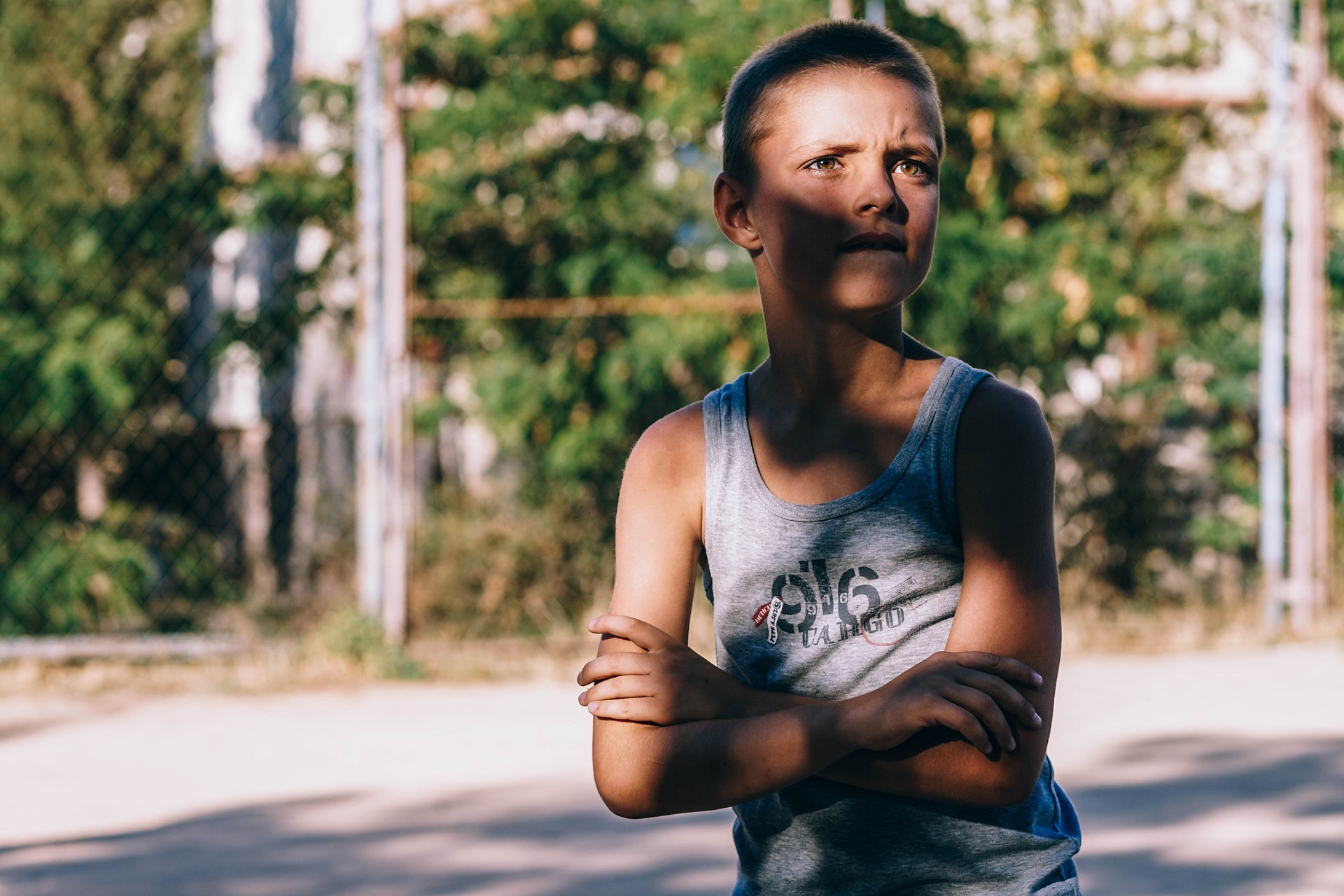
Do you suffer from an odd ache here and there in your body?
You’re not alone. We plant the seeds of our future small, annoying afflictions when we’re kids, and those nasty seeds grow into full-blown weeds that can smother our blooming health right on the root.
Perhaps I’m being too poetic here, in a blog article intended to promote our everyday and urgent care services, but this is relevant. What we’re talking here is healthcare for kids and youth:
But that stretches further into life. The habits we establish as kids go far into adulthood, and one of those habits is lack of respect and appreciation of our own body: Of how fragile it is, and how much the damage we do to it will stay with it. As you want your kids to be careful around expensive furniture, or driving your expensive car on a weekend, so you want to make them appreciate that they only have one body and that body must be treated with proper care.
Childhood traumas – of mental and physical kind – should not be underestimated; they may affect the rest of our lives!
Here’s a story from my own life, I hope it resonates with you. Trust me, you don’t want this to happen to your kid.
It’s a commonly known fact that death comes after life. Sadly, this doesn’t happen to be true for most people – who don’t take the trouble to enjoy life to the fullest, and so, the live as though they’re already dead.
(That’s pretty much what I told myself back when I was a little younger.)
Back then, I was reckless, impulsive, and out of control. I embraced every moment as if it were my last because I was fortunate enough to have the foresight that life is short and should be lived to its fullest.
However…
The decisions I was making and the circumstances that I was allowing myself to fall into were significantly more harmful than rewarding.
In my youth, I didn’t think of my future. Honestly, life seemed like it would always be the same and I was the only person to ever live that Father Time wouldn’t harm. Yes, I was delusional and, in many ways, naïve and arrogant but it molded a very important journey that led me down a destructive road that would eventually transform into a more purposeful life. But I had to fall many times before getting there.
For some reason when you’re young, seeking advice, medical assistance, or simply asking for help can be difficult. You think you know everything there is to know and it’s nearly impossible to believe that someone else may be smarter than you. I have lost track of the number of times when my impulses got the best of me, but one memory comes to mind.
Growing up, there wasn’t much to do in my rural Pennsylvania town. My friends and I loved watching action movies and would always reenact intense and dangerous scenes from them, wanting to be as bold as the stars in the films. But then things escalated into full-blown stunts. No harnesses, green screens, or stunt doubles to protect us. All of us were constantly banged up, scratched, and bruised but none of us wanted to look soft, and as silly as it’ll sound, we thought that made us cool.
Our most dangerous and idiotic exploits took place on the local train tracks. Every Friday at 5 PM a massive freight train would speed by transporting who-knows-what. Normally we would play a game of chicken with the steel tube but would make sure to give ourselves plenty of time to hop out of the way before impact. But that got old quickly. The daredevil in me took over and I came up with the bright idea to dangle myself from the bridge above the tracks as the train whizzed by. Even my adventurous pals knew better and warned me not to try it. That only excited me more. I patiently waited for the train to come my way and when I saw the smoke in the distance, I prepared myself. When it was about fifty yards away, I lowered myself, realizing I was not dangling above the train but hanging directly in front of it. I was soon to be a splattered fly on the windshield. My hands were sweaty, and I overestimated my strength. Pulling myself back up to safety was impossible. In a split-second decision, I let go and dropped. One of my friends was brave enough to help me hobble off the tracks just in time before getting crushed, just like our favorite action heroes.
The pain in both my knees, ankles, and back was unlike anything I have ever experienced yet when my buddies tried to call an ambulance for me, I wouldn’t let them. I tried to laugh it off even though my bloodshot eyes said otherwise. After a few more attempts to call for medical attention, they stopped trying and assumed I was OK. Deep down, I wished more than anything that someone would come to my rescue.
Still to this day I have back issues, weak knees, and ligament damage in both ankles all because I was too stubborn and proud to see a medical professional. It’s hard for me to stay seated for long amounts of time and jogging is completely out of the question because my body hasn’t healed in the ways that it needed to.
If only technology was quicker then I would go back in time and grab that kid by his filthy shirt collar and tell him to stop being so foolish. There was no point to it all, no one was impressed and all it left me was a life of pain. Sure, we were bold and maybe brave at times but in the long run, none of those stunts were worth it.
We are fortunate enough to live in a country where we have access to essentially unlimited amounts of medicine, hospitals, urgent care facilities, and clinics that will help us heal our bodies when needed but also supply us with proper information on how to live proactively.
Pediatric traumas of today do not need to remain untreated, and I implore you, the reader of this article: If you know a kid who needs proper care after playing or doing sports maybe a little too recklessly and having been banged up in the process – please, send them to get checked out. You’ll be surprised how much a basic urgent care visit can do for preventing the kind of recurrent pains in the joints or ligaments that too many people suffer absolutely unnecessarily!
But back to my story – unfortunately, I wasn’t as wise in my past as I am now, and the experience I described to you wasn’t enough for me to learn. That wouldn’t come for some time…
* Legal disclaimer: The content of this article and the entire Chai Care blog is for educational purposes only; it does NOT constitute medical advice and must not be considered as such. Please consult a medical professional regarding any symptoms or health concerns you or your loved ones.